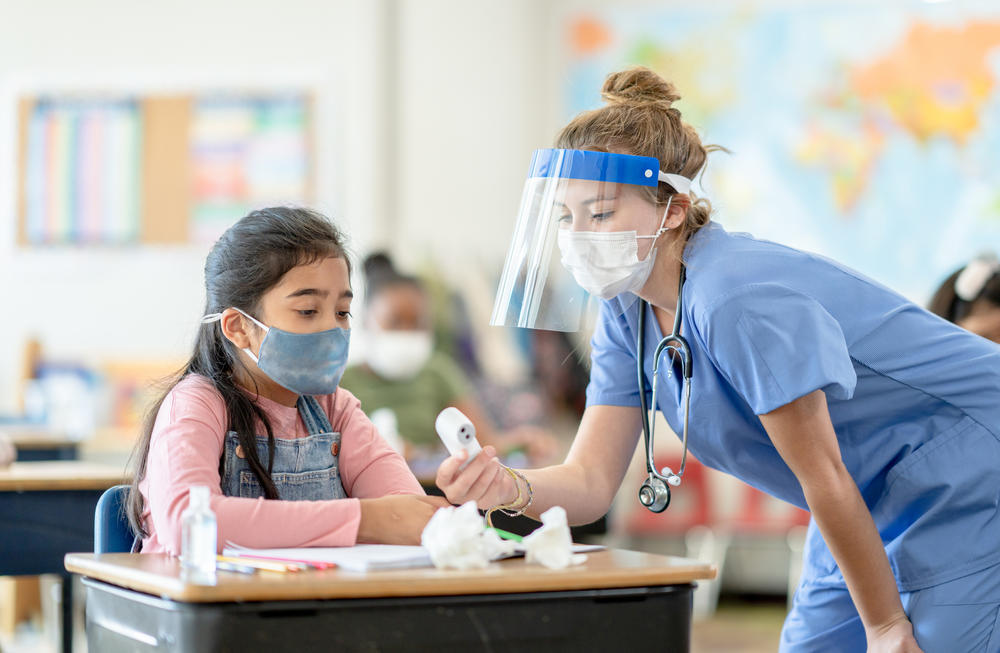Editorial
Letter: School nurses are underappreciated, underpaid, and overworked and it’s time for change

As a student nurse at UMass Dartmouth, I’ve had the opportunity to shadow a school nurse for 4 weeks as part of my pediatric clinical rotation. Coming from a family of nurses (my mother being a school nurse), I’ve had some understanding on how strenuous the job can really be. There are many misconceptions that individuals have regarding school nursing, but are they really true? My 4 weeks at a middle school opened my eyes to the workload and stress put on the shoulders of the school nurse.
What does a school nurse do? Now that’s a question some may feel compelled to answer; give ice packs, administer medications, send kids home. School nursing is so much more than that, and It’s time for us to appreciate and praise them for the amazing job they do protecting our school children every day.
We’ll start at the beginning of the school year. On day one, the school nurse is sending out illness and accident forms to parents and checking student records to determine who’s missing immunizations and verifying new students and creating records for them. They need to look at new records and determine if there are any new medical issues with their students and make sure they have orders for students needing EpiPens, medications and diabetes supplies. The school nurse keeps an “At Risk” folder for students to determine what precautions/interventions are needed for students with specific needs. This is all in preparation for the school nurse for the year, and these actions alone can take days. School nurses stay past the school day, some coming home as late as 8PM because they were trying to catch up on all their paperwork. This doesn’t include the preparation at the beginning of the year for teachers as well. The school nurse makes sure to go over any medical issues with each student’s teacher. This is all done by the end of the first month of school.
Starting in October, nurses will offer physical exams to students who haven’t had one and follow up with parents of students who don’t have an updated yearly physical. They begin to fill out vision and hearing forms for students and complete a state report for kindergarten and pre-k immunizations. They will record the height, weight, and blood pressure for all school physicals and document them in SNAP, the documenting platform used at my assigned school. In November, vision and hearing screenings are performed, and the nurse must inform the guardians of any students that fail testing. They have to make up a list of students needed to retest and make sure follow up testing is performed. Follow-up testing is done in December.
The school nurse sighs a breath of relief that the winter months are over. Her days begin to get shorter. She’s able to have dinner with her family and come home while the sun is still up. It’s a brand-new year. The nurse is back from winter break. Now it’s time to follow up on physicals still not returned to school and finish any vision and heating tests that need to be completed. Starting in March, postural screening is done to detect any back abnormalities in students and re-examination is done if problems are evident. If problems are noted, the parents are notified by the school nurse and are given the option to see their own doctor or the school doctor. In April, the nurse will assist in conducting physical exams with the MD. They will make sure medical records are kept updated (especially students with medical issues) and call parents to clarify any changes on the record.
Now comes June. The school year is coming to an end, but the school nurse’s job isn’t. The school nurse makes sure to send out medication packets for students that take meds during school time and if the student is moving to another school, their health records should be sent over by the nurse. Medication sheets should be made in anticipation for the next school year.
This is the worklist of a school nurse in the days before COVID-19. With the emergence of the pandemic, school nurses have taken on a major role: contact tracing for their students. In addition to identifying positive cases, the school nurse is responsible for finding out who the patient was in contact with and notifying them that they’ve been in contact with a COVID+ individual. Many of these nurses take their work home with them, feeling trapped at work but wanting to be in the comfort of their own home. Most of them admit to not being able to take a lunch break, coming home starving after not eating a crumb all day. From a school nurse herself on why she doesn’t take lunch; “there’s just not enough time”. From personal experience, I’ve seen the stress of a school nurse’s job bring her to tears. Many are unaware of the lengths these professionals go to assure that the children they take care of are up to date on immunizations, physicals, and are in the best health possible. School nurses are underappreciated, underpaid, and overworked. It’s time for change.
This list comprises only a fraction of the work the school nurse does during the school year. School nursing is so much more than ice packs, giving out band aids and documenting on the computer. As nurses, we are committed to providing the best, quality care to our patients while also maintaining a professional boundary. School nurses are superheroes without capes, and the COVID-19 pandemic has emphasized that.
Gabriel Bernier
Fall River
-

 Community7 years ago
Community7 years agoNational Shrine of La Salette Festival of Lights 2017 set to begin
-

 Community6 years ago
Community6 years agoMassachusetts State Police looking for good home for retired dogs
-

 Crime6 years ago
Crime6 years agoFall River ranked most dangerous city in Massachusetts according to report
-

 latest7 years ago
latest7 years agoDurfee student allegedly overdoses on marijuana
-

 Community6 years ago
Community6 years agoVideo of Fall River Police goes viral
-

 Causes6 years ago
Causes6 years agoMissing Fall River woman found deceased
-

 Crime6 years ago
Crime6 years agoFall River Police add names to most wanted list
-

 Causes6 years ago
Causes6 years agoFall River teenager reported missing has been found



